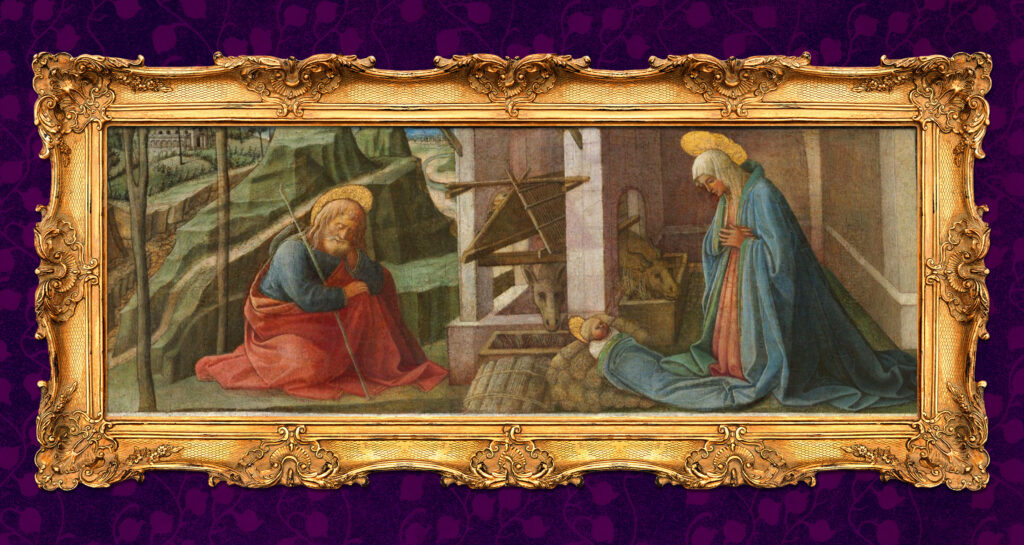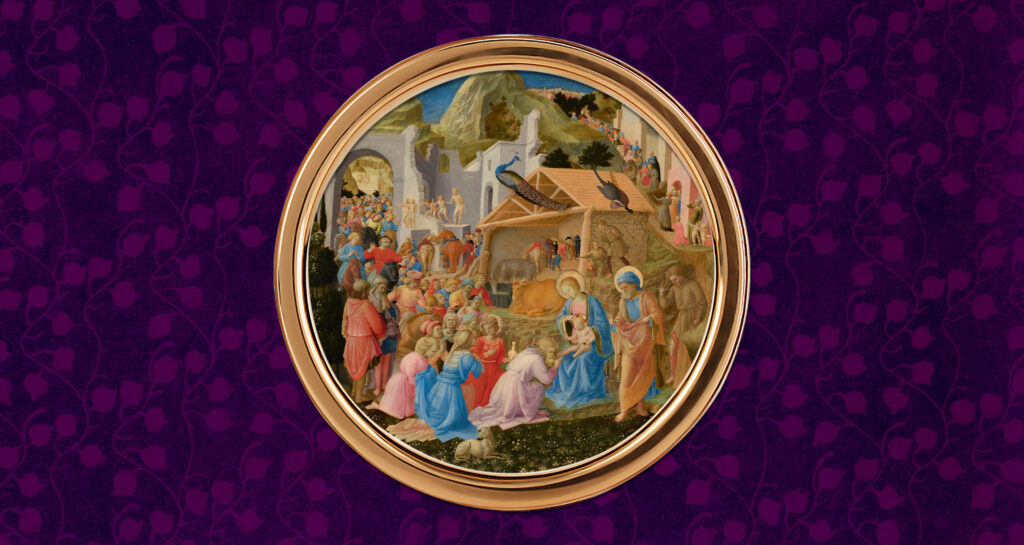Beauty revealed: An Advent calendar of art and reflection
Published on November 27, 2025
During this season of Advent, join us in reflecting on a work of art for each week of Advent. This art Advent calendar gives you the opportunity to turn your heart toward beauty, even if just for a moment, each day until Christmas. Bookmark this page for easy reference and comment below to let us know you are following along!
The First Week of Advent:
“Noah Leading the Animals into the Ark” by Giovanni Benedetto Castiglione, c. 1645
View or download here: National Gallery of Art

Nov. 30:
In the readings for this first Sunday of Advent, we are reminded of all the history that led up to this point. Old Testament prophets and patriarchs paved the way for the coming messiah. As the responsorial psalm echoes, all of mankind is on a journey — longing and seeking for our Lord. Observe the painting for this week and let it make an impression with you. Look over the figures and try to memorize the composition. See what details remain in your mind once you close your eyes.
Dec. 1:
How much of the painting do you remember from yesterday? Today, look at the center of the painting. Noah is trying to coax the oxen into the ark. To those on the outside, Noah’s actions look crazy. Has the Lord ever asked you to do something “crazy”? Were you able to step out in faith?
Dec. 2:
Look at the expressions on the faces of the animals. Is there any expression that particularly resonates with you?
Dec. 3:
The woman behind Noah is dutifully carrying stoneware of water onto the ark. The positioning of the two figures gives a visual complementarity. What are some areas of your life where you can complement the work of another?
Dec. 4:
Look at the colors of the sky. The storm covers nearly half of the sky. You can almost feel the wind sweeping through the painting. Noah’s task is challenging and urgent. Reflect on the arriving storm.
Dec. 5:
Notice the composition of color in the painting. Most colors are neutral and muted, but focal points are punctuated with red and orange. Where is it drawing your eye?
Dec. 6:
As we prepare our hearts during Advent, we are often unaware of the ways God will speak to us. Noah and many prominent Old Testament figures are excellent examples of faithfulness despite unexpected circumstances. Ask the Holy Spirit to help you open your heart to God’s unexpected plans.
The Second Week of Advent
The Immaculate Conception By Bartolomé Estaban Murillo, c. 1665
View or download here: Cleveland Museum of Art

Dec. 7:
This week we focus on the Immaculate Virgin Mary. God prepared her for her role as Mother of God from the moment of her conception. Can you think of a time that God blessed you with particular gifts, talents, or experiences that prepared you for something he had in store for your life?
Dec. 8:
Gaze at the face of Mary in this painting. What emotions do you sense? Does this depiction of Our Lady resonate with you? Why or why not?
Dec. 9:
The composition of the painting relies heavily on the diagonal divide across the center. The cherubs and Mary’s blue cloth visually divide the painting from the bottom left to upper right corner. This draws your eye upward. What are some of the other details that add movement to this work?
Dec. 10:
Recall the movement you found in the painting yesterday. When you look at the piece as a whole, where do you see stillness in this painting? Is there peace in the stillness?
Dec. 11:
Just as a child can relax and rest in the arms of his mother, so too should we lean into the Blessed Mother as a haven of peace. Pray the simple prayer, “Mary, Mother of God, be a mother to me now.”
Dec. 12:
The cherub figure holds a lilly in the upper right of the painting, symbolizing Mary’s virginity and purity. What are some areas of your life that need an increase in purity (purity of thought, purity of intention, etc.) where you can invite Mary to intercede for you.
Dec. 13:
The figure of Mary is firmly planted, yet there is a feeling of soft movement and docility. How can we channel that strength and softness? Where do you have hurry and anxiety that can be replaced by this disposition of gentle strength?
The Third Week of Advent
“The Annunciation” by Henry Ossawa Tanner, 1898
View or download here: Philadelphia Art Museum

Dec. 14:
The Alleluia verse for this Sunday is Isaiah 61:1 which reads, “The Spirit of the Lord is upon me, because he has anointed me to bring glad tidings to the poor.” This passage is referenced in Luke 4:18 when Jesus proclaims that passage in the synagogue. Today, rest with that passage.
Dec. 15:
The theme for the third week of Advent is joy. Can you find anything in the painting that is showing joy?
Dec. 16:
Soak in the rich hues of warmth in this painting. Look at the details in all the fabric, blankets, and rug.
Dec. 17:
Where is the focal point of this painting? What elements draw your eyes to that central point?
Dec. 18:
Today, look closely at the figure of Mary. Reflect on her facial expression. What do you think she is thinking? Is she experiencing a type of joy in this moment?
Dec. 19:
Why do you think the artist did not personify the angel Gabriel? Was his depiction of Gabriel as light successful?
Dec. 20:
Advent is full of themes of light and darkness. The Advent candles light our way as we await the coming of the Light of the World. Is there any darkness in this painting?
The Fourth Sunday of Advent
“The Nativity” By Fra Filippo Lippi and workshop, c. 1445
View or download here: National Gallery of Art

Dec. 21:
In the Gospel today we hear about Joseph’s dream which revealed to him the will of God. Reflect on St Joseph’s trust and obedience. Look at the restful figure of St. Joseph in this painting.
Dec. 22:
This simple depiction of the nativity is tranquil and calm. What details do you notice about the three figures in the painting?
Dec. 23:
The painting is visually divided down the center. The left side represents the earth with St. Joseph, abundant greenery, and trees. The right side has the Blessed Virgin Mary and baby Jesus. Despite this seemingly stark division, the painting is very balanced as if to emphasize the delicate combination of the human and the divine. Reflect on this beautiful mystery of the Incarnation.
Dec. 24:
Baby Jesus is painted as a plump and chubby cheeked newborn. Spend some time with the more human details of this painting. There is joy with the birth of any child, but an even greater joy with the birth of the Messiah.
Christmas Day
“The Adoration of the Magi” by Fra Filippo Lippi and Fr Angelico, c. 1440/1460
View or download here: National Gallery of Art

Dec. 25:
Soak in all the richness of this painting now that Christmas Day is here! In yesterday’s painting we were able to focus only on the Holy Family, but today we have a more full and jubilant depiction. Imagine yourself in the throngs of people coming to greet the Christ Child. Oh come, let us adore him!



